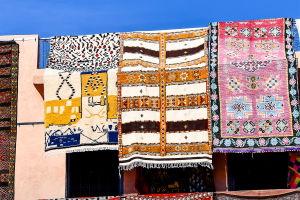What if sculptures were no longer carved by hand but printed layer by layer? This is no longer a dream but a growing reality. The integration of 3D printing technology into sculpture is transforming the art form in dramatic ways.
From new creative opportunities to ecological benefits and public accessibility, 3D printing is expanding the future of sculpture. Let's explore how this innovation is opening doors that traditional methods could not easily unlock.
What Is 3D Printing in Art?
3D printing, also called additive manufacturing, is a process in which materials like plastic, metal, or resin are layered to build a three-dimensional object. In the world of sculpture, this means artists can now design works digitally and produce them using a printer.
Complex shapes that were once nearly impossible to carve by hand can now be printed with precision. The result is an entirely new approach to form, texture, and concept in sculpture.
Creative Freedom Without Physical Limits
Traditional sculpture often requires years of mastering materials like stone or clay. While this craft has deep value, 3D printing offers a different kind of creative freedom. Artists can create bold and intricate forms that would be difficult or even impossible using traditional tools. It allows for experimentation without the fear of wasting rare materials.
As a result, artists can focus more on ideas and less on physical restrictions.
Blending Digital and Physical Worlds
3D printed sculpture exists at the intersection of digital design and physical art. Many artists now use software to sketch and test their ideas before printing them into reality. This opens new doors for collaboration with architects, designers, and engineers.
The digital process also allows easy revisions, scalability, and testing of prototypes—offering more flexibility than traditional methods ever allowed.
New Materials, New Possibilities
Unlike traditional sculpture materials such as marble or bronze, 3D printing allows for the use of a wide range of substances—bioplastics, recycled composites, even sand and ceramics. These new materials can reduce waste and improve environmental sustainability.
Some artists are experimenting with biodegradable or locally sourced printing compounds, showing that technology and environmental responsibility can go hand in hand.
Accessibility and Democratization of Sculpture
One of the most powerful aspects of 3D printing is how it lowers the barrier to entry. Aspiring sculptors no longer need access to expensive tools or workshops. With a digital file and a printer, artists from any background can create physical artworks.
Some open-source communities even share sculpture designs freely, allowing global collaboration. This democratization could inspire a new generation of creators to join the field.
Challenges and Controversies
Despite its promise, 3D printed sculpture also raises important questions. What does authorship mean when a file can be copied and reprinted? How do we balance technological precision with human expression? There's also the risk of over-reliance on software, which might distance artists from hands-on craftsmanship.
Critics worry that the emotional connection found in traditional methods could be lost. These debates highlight the need for balance between innovation and tradition.
Applications Beyond Art Galleries
3D printed sculptures are not limited to galleries or museums. They are increasingly used in public installations, education, and even medical visualization. For example, large-scale public art pieces can be created more efficiently with printing methods. In classrooms, students can design and print mini sculptures as part of art or science projects.
Even historians are using 3D printed replicas to reconstruct lost or damaged cultural heritage objects.
Collaborations with Science and Architecture
Another exciting trend is the collaboration between sculptors and professionals in science or architecture. Some artists work with mathematicians to explore geometric patterns, while others design sculptures that interact with sunlight, sound, or airflow. In urban design, 3D printing is used to test sculptural elements for buildings or parks.
These interdisciplinary partnerships are turning sculpture into a multi-sensory and problem-solving tool.
Looking Ahead: The Future of Sculpture
As 3D printing technology evolves, we can expect even more advanced materials and techniques. Printing with organic materials, self-healing structures, and interactive components may soon become part of the sculptural vocabulary.
Artists may also explore virtual reality as a design tool, creating sculptures in digital space before bringing them into the real world. The future of sculpture is not just about form, but about interaction, emotion, and innovation.
Conclusion: Are You Ready to Print the Future?
Whether you're an artist, a student, or simply a curious observer, the rise of 3D printing in sculpture invites all of us to reimagine creativity. The blend of technology and artistry is not replacing tradition but expanding it—offering more voices, more materials, and more possibilities than ever before.
Have you ever thought of designing a sculpture yourself? What would you print if you could? Maybe the future of sculpture isn't only in museums—it's in your own imagination.


